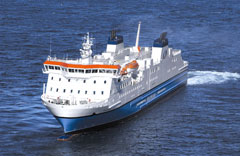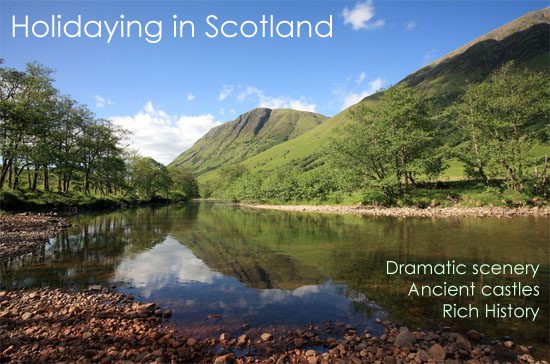Scotland Travel: Island-hopping to Scotlands Far North
There are 790 islands scattered off the coast of Scotland and they have always been a source of fascination for me. None more so than the Shetlands, enticing and mysterious as the northernmost outpost of the United Kingdom. Sitting, wave-lashed where the Atlantic Ocean meets the North Sea, they are closer to Bergen in Norway than Aberdeen on the Scottish mainland. Shetland is on the same latitude as the southern tip of Greenland, Siberia and Alaska.
To the north there is nothing but hundreds of miles of ocean, until you reach Spitsbergen and the Arctic wastes beyond. A clear spring morning found me on one of the new Northlink ferries for the overnight sailing from the granite city of Aberdeen to Lerwick, the Shetland capital. The modern vessel, MV Hrossey, was reminiscent of a small cruise ship, with its bars, restaurant, shop, cinema and my comfortable cabin was equipped with TV and en-suite bathroom.  The Shetland islanders are proudly independent. Though they send members to the parliaments in both London and Edinburgh, Robin, our tour guide introduced himself by unfurling a Shetland flag, with its white cross on a blue background. I saw a lot more of these unofficial, Scandinavian-style insignia on display than I did Scottish flags. In fact, these islands with their scattered, squat homesteads, have quite a Scandinavian feel to them: unsurprising as they were once Viking strongholds and belonged to Norway until 1469. This heritage is celebrated in dramatic fashion each January with the Up Helly Aa festival, when Viking longships are set ablaze to the accompaniment of men in warrior-dress and a thousand flaming torches.
The Shetland islanders are proudly independent. Though they send members to the parliaments in both London and Edinburgh, Robin, our tour guide introduced himself by unfurling a Shetland flag, with its white cross on a blue background. I saw a lot more of these unofficial, Scandinavian-style insignia on display than I did Scottish flags. In fact, these islands with their scattered, squat homesteads, have quite a Scandinavian feel to them: unsurprising as they were once Viking strongholds and belonged to Norway until 1469. This heritage is celebrated in dramatic fashion each January with the Up Helly Aa festival, when Viking longships are set ablaze to the accompaniment of men in warrior-dress and a thousand flaming torches.
The wild, peaty and rocky landscapes are remarkable in that they are almost completely treeless: the salty winds from the Atlantic take care of that. Also dotting the landscape are the sturdy little Shetland ponies, bred in vast numbers from the 1850s for export to the collieries of Northern England, where they earned their keep hauling coal deep underground. The sea, or fingers of it, reach into every corner of the Mainland for it is long and narrow getting more and more rugged as you travel south to Sumburgh Head. This is one of the many places where you can enjoy the islands rich birdlife: the sheer cliffs are alive with thousands of nesting puffins in May and June, while seals and even whales play in the waves beyond. Mainland is the largest of 100 islands that make up the Shetlands though only 16 are inhabited. This far north, the summer light lasts well into the night: 19 hours of daylight is usual at midsummer. The Simmer Dim as it is called can be quite disorientating at first, but golfers are overjoyed to be able to enjoy their sport at midnight! The highlight for me, though, was a walk back in time at the Jarlshof Neolithic village, remarkably intact even after some 5,000 years, in its evocative setting near the waters edge. Various layers of history have been unearthed here, from a second century BC settlement, through Viking and medieval farms. Archaeoligists also rave about the islands ancient brochs, a sophisticated network of stone watchtowers dating from 100BC, of which more than 120 remain.
The Northlink ferries also call at the Orkney islands, to the south. Rich in ancient sites, the Orkneys have extraordinary remains of prehistoric villages, stone circles and tombs. King of these is Skara Brae, a Neolithic village more ancient than the Pyramids, entombed for centuries until a fierce storm in 1850 revealed its secrets. There are spectacular cliffs, wide skies and huge horizons. The Orcadians are great craftspeople, with a strong tradition of jewellery making as well as fine knitwear, weaving and pottery.
Off Scotland’s West Coast are the Hebrides, or Western Isles very different in culture and atmosphere to those of the northern ones. A frequent service of ferries plying to and from this patchwork of islands mainly under the flag of Caledonian MacBrayne (known as Calmac by the locals) make island hopping practical and easy. They offer a variety of mountain and coastal landscapes, and are rich in wildlife, from birds of prey to deer and dolphins. Oban, 93 miles north-west of cosmopolitan Glasgow, is a compact but bustling port from which the ferries sail off to a dozen or more island destinations. I chose the Isle of Mull, second largest of the Hebridean islands after Skye and a brief 40 minutes by boat. Its 352 square miles contain a population of just 3,000 (Greater London, just under twice the size, packs in seven million!). Craignure, one of Mull’s ferry ports, becomes a hive of activity whenever a boat arrives. After a hearty lunch in the stone-built Craignure Inn, it was time to climb aboard a gleaming steam train of the Mull Railway for the mile-long ride to the baronial-style Torosay Castle and its gardens.
In typical island fashion, visitors are welcomed as guests, encouraged to sit on the armchairs and leaf through the family scrap albums. Mull is one of the best islands from which to see wildlife including sea eagles and otters, whose populations are growing steadily. There are seals, too and more deer than people plus over 200 species of birds. In Scotland, one island often leads to another. At the western extremity of Mull you can see Iona, with its abbey an unmistakable landmark across the sound. As well as the regular crossings to Iona, two ferry companies make the longer journey to Staffa, and you can visit both islands on the same trip. Staffa’s famous sea-cave inspired the German composer Mendelssohn in his Hebrides Overture. In fact, it is not so much an island, more a huge lump of volcanic rock rising out of the Atlantic (its name is Norse for Pillar Island). I edged my way along the basaltic pillars (thankfully there is a rope to cling to) into the mouth of the cave. It was the eerie sound of a rough sea booming and crashing inside the cavern that inspired the composer, though this day was very different. A calm sea and glorious sunshine brought sightings of puffins, shags and a shy sea-otter. Visitors are invited to explore Iona on foot (cars are not encouraged) or in style by pony-and-trap, visiting the abbey and ancient chapel where 48 Scottish kings are reputedly buried. It was here that St. Columba and his followers came from Ireland in the 6th century and spread their teachings throughout Scotland and much of Europe. Back on Mull, Tobermory is the main town, its focal point being colour-washed houses strung around a crescent-shaped harbour. The rainbow-coloured town has even become the location for a BBC childrens TV series, Balamory.
The Tobermory Hotel has a room like so many on the islands with a perfect view over the harbour. Tobermory is the departure point for trips to see dolphins, basking shark and even whales, which come in close to the islands. These are not the only delights of the Hebrides: the air is so pure that lichen grows on the trunks and branches of trees; and the light is so clear it gives a sharpness much sought after by photographers and artists. Many beaches are of soft, white sand and lapped by clear water. Among the other islands to visit are Islay, renowned for its peaty malt whisky; Skye with its links with ‘Bonnie Prince Charlie’; and Jura, where George Orwell came to write “1984”. Scottish island hopping is addictive, and I predict I shall be hooked on it for years to come.

